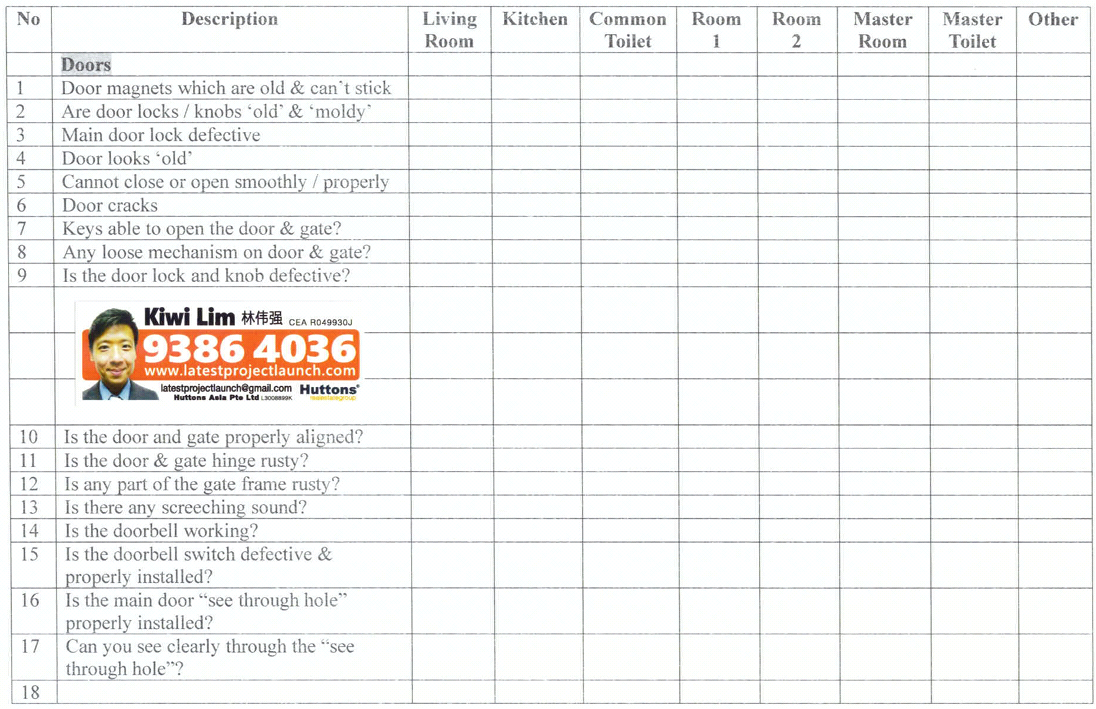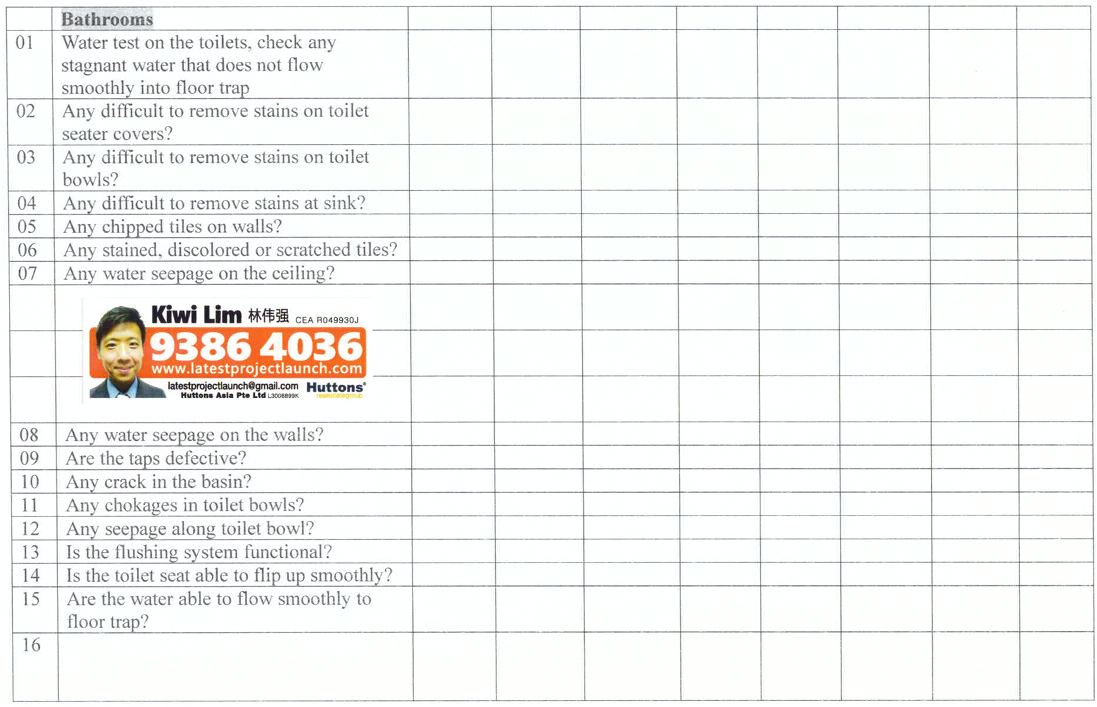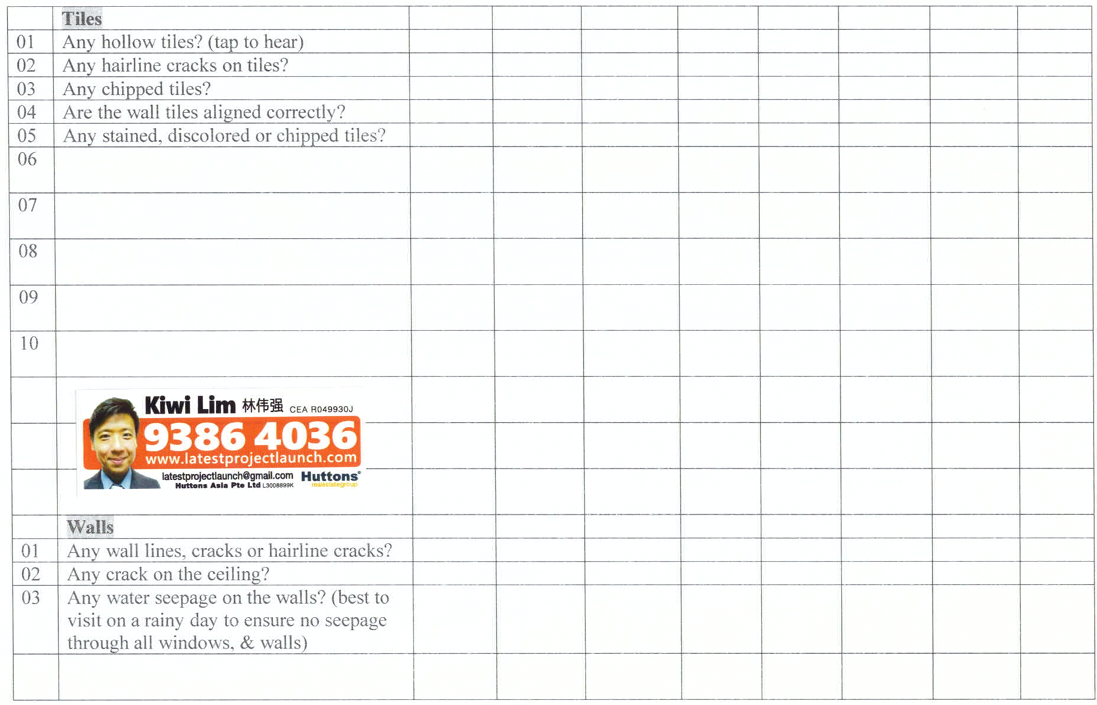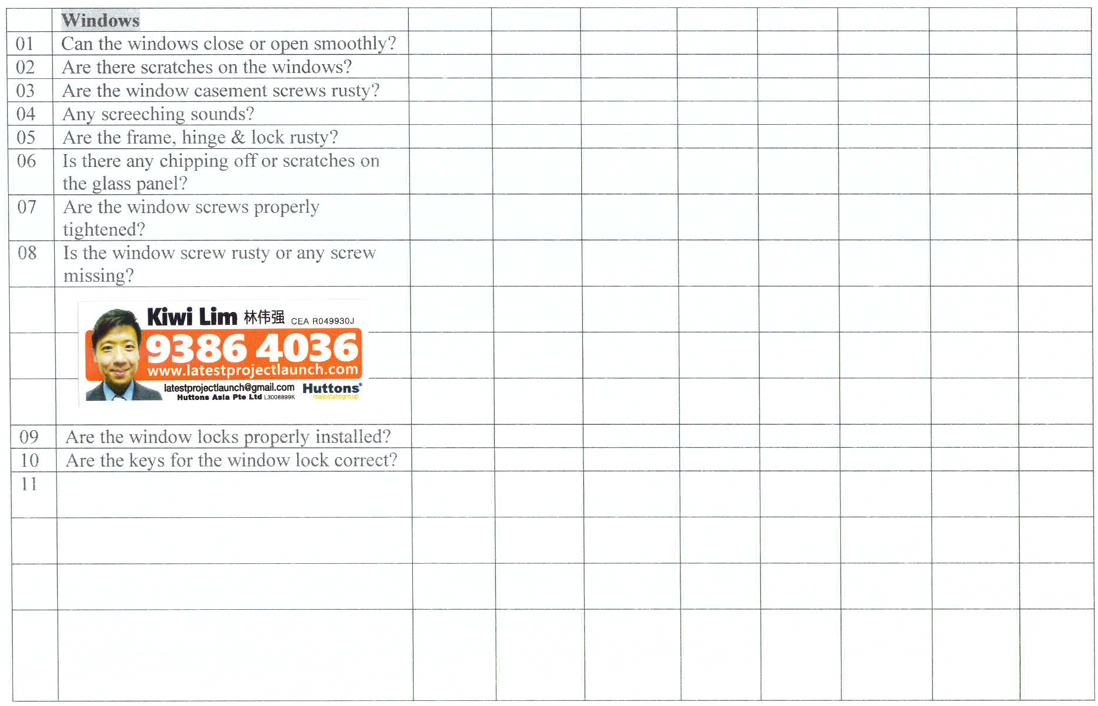Congratulations to owning your dream home. If your home is a brand new BTO, condominium or house direct from the developer or HDB, you should be enjoying a one year defects warranty period. After taking over the keys, you should immediately get down to the work of identifying defects in your new home before you decide to move in or do any renovations to your home.
When the developer is ready to hand over the unit, they will issue a Notice of Vacant Possession to you - the purchaser.
WHAT IS A DEFECT?
You should make a thorough inspection of the unit upon taking vacant possession to make sure there are no defects. Under the Sale & Purchase Agreement, the term "defect" means any fault in the unit which is due either to defective workmanship or materials or to the unit not having been constructed according to the Specifications set out in the Sale and Purchase Agreement.
For units in a strata subdivided housing project, the term "defect" in the Sale & Purchase Agreement also covers defects in the common property and housing project. You are advised to seek clarifications from the developer or seek professional advice if you are unsure whether there are defects in the unit, the common property or housing project.
DEFECTS LIABILITY PERIOD
The developer is obliged to rectify any defect in the unit, the common property or the housing project which becomes apparent within a period of 12 months from:
PROCEDURE TO RECTIFY DEFECTS
When defects are discovered, purchasers should:
FACILITATING RECTIFICATION OF DEFECTS
To ensure that the rectification works are carried out smoothly, the purchaser should take note of the following:
If you decide to conduct basic home defects inspection on your own, I have compiled a list for your reference below. You may prepare color stickers to indicate the location of the defects and take photos to remind yourself the location in order to double check if the developer's contractor make good with the defect.
When the developer is ready to hand over the unit, they will issue a Notice of Vacant Possession to you - the purchaser.
- The developer is required to deliver vacant possession of the unit to you by the date specified in the Sale & Purchase Agreement.
- You should make a thorough inspection of the unit upon taking vacant possession to make sure there are no defects.
- If any defects are discovered during the defects liability period, the developer is obliged to rectify these defects free of charge.
- Purchasers should follow the procedure in the Sale & Purchase Agreement for the rectification of defects and making claims for the cost of rectification works.
- Purchasers can help to facilitate the rectification of defects, e.g. by being specific on the defects which the developer is asked to rectify.
WHAT IS A DEFECT?
You should make a thorough inspection of the unit upon taking vacant possession to make sure there are no defects. Under the Sale & Purchase Agreement, the term "defect" means any fault in the unit which is due either to defective workmanship or materials or to the unit not having been constructed according to the Specifications set out in the Sale and Purchase Agreement.
For units in a strata subdivided housing project, the term "defect" in the Sale & Purchase Agreement also covers defects in the common property and housing project. You are advised to seek clarifications from the developer or seek professional advice if you are unsure whether there are defects in the unit, the common property or housing project.
DEFECTS LIABILITY PERIOD
The developer is obliged to rectify any defect in the unit, the common property or the housing project which becomes apparent within a period of 12 months from:
- The date the developer actually delivers vacant possession of the unit to you - the purchaser; or
- The 15th day after the purchaser receives notice that the Temporary Occupation Permit has been issued and that the roads, drainage and sewerage works serving the housing project have been completed, whichever is earlier.
PROCEDURE TO RECTIFY DEFECTS
When defects are discovered, purchasers should:
- Specify the details of the defect in writing and request the developer to make good the defect.
- Request for a joint inspect of the defect with the developer (optional) but, in any event, the developer should carry out the necessary repairs within one month of receiving notice of the defect from you - the purchaser.
- Notify the developer in writing that you wish to engage another party to rectify the defect and provide the estimated cost for the rectification works if the developer fails to rectify the defect within one month. You should obtain a written quotation of the estimated cost.
- Include only the defect which you have informed the developer in the notification. Follow step 1 of this process if any new defect is found.
- Allow the developer an opportunity to carry out the rectification works.
- Carry out the repairs and claim for the cost and expense of the repairs from the developer only if it fails to rectify the defect within 1 month after the date of notification in step 3.
FACILITATING RECTIFICATION OF DEFECTS
To ensure that the rectification works are carried out smoothly, the purchaser should take note of the following:
- Be specific on the defects which the developer is asked to rectify.
- Be present for the appointments with the developer or contractors.
- Inform the developer before-hand if any new defects which have not been mentioned in the original notification, are to be discussed.
- Ensure that the affected areas are free from obstruction like furniture and appliances to facilitate the rectification work and prevent damage to your belongings.
If you decide to conduct basic home defects inspection on your own, I have compiled a list for your reference below. You may prepare color stickers to indicate the location of the defects and take photos to remind yourself the location in order to double check if the developer's contractor make good with the defect.






